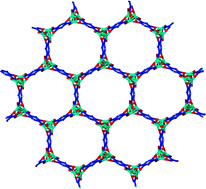Facile xenon capture and release at room temperature using a metal–organic framework: a comparison with activated charcoal†
Abstract
Two well-known metal–organic frameworks (MOF-5, NiDOBDC) were synthesized and studied for facile xenon capture and separation. Our results indicate that NiDOBDC adsorbs significantly more xenon than MOF-5, and is more selective for xenon over krypton than activated carbon.


 Please wait while we load your content...
Please wait while we load your content...